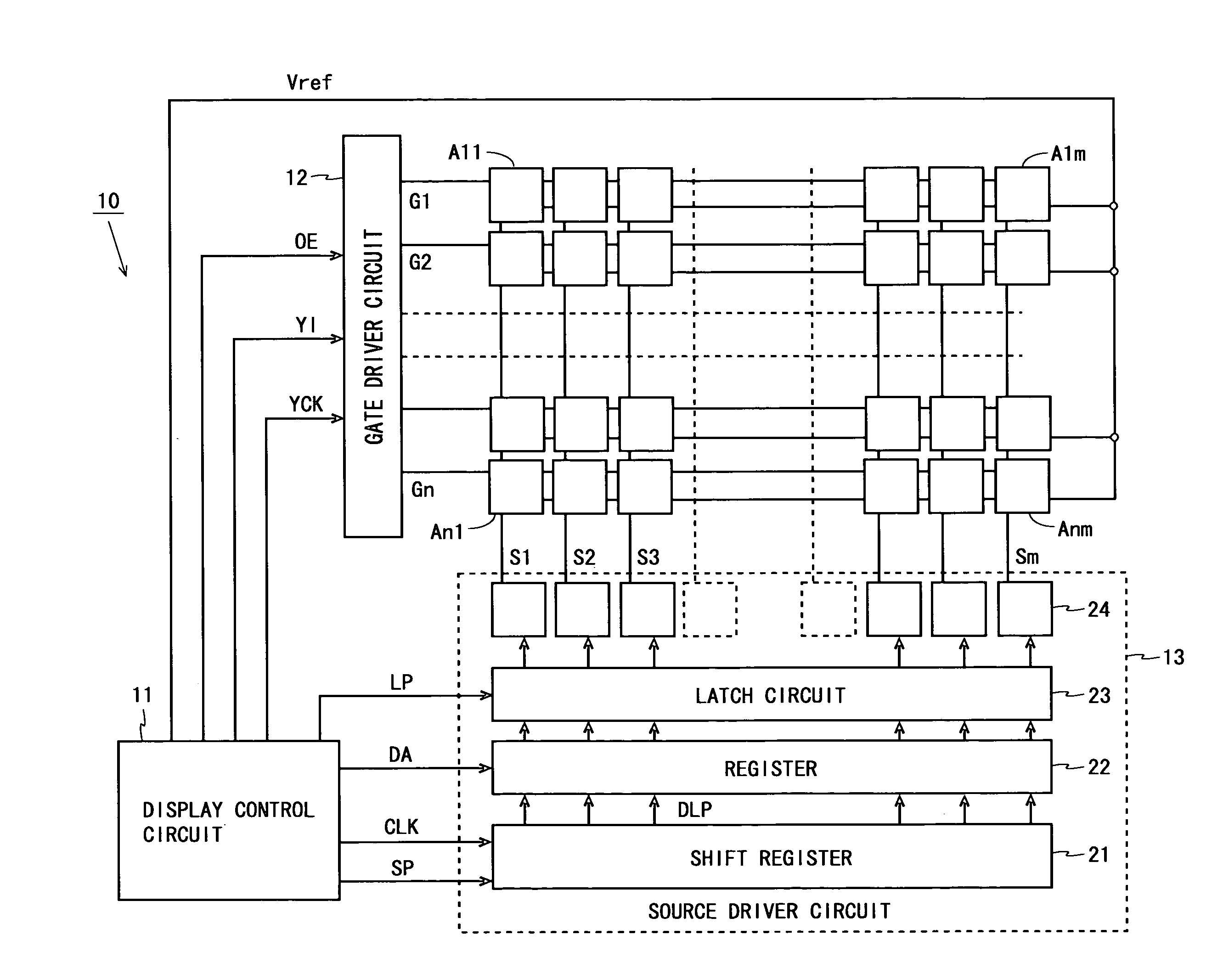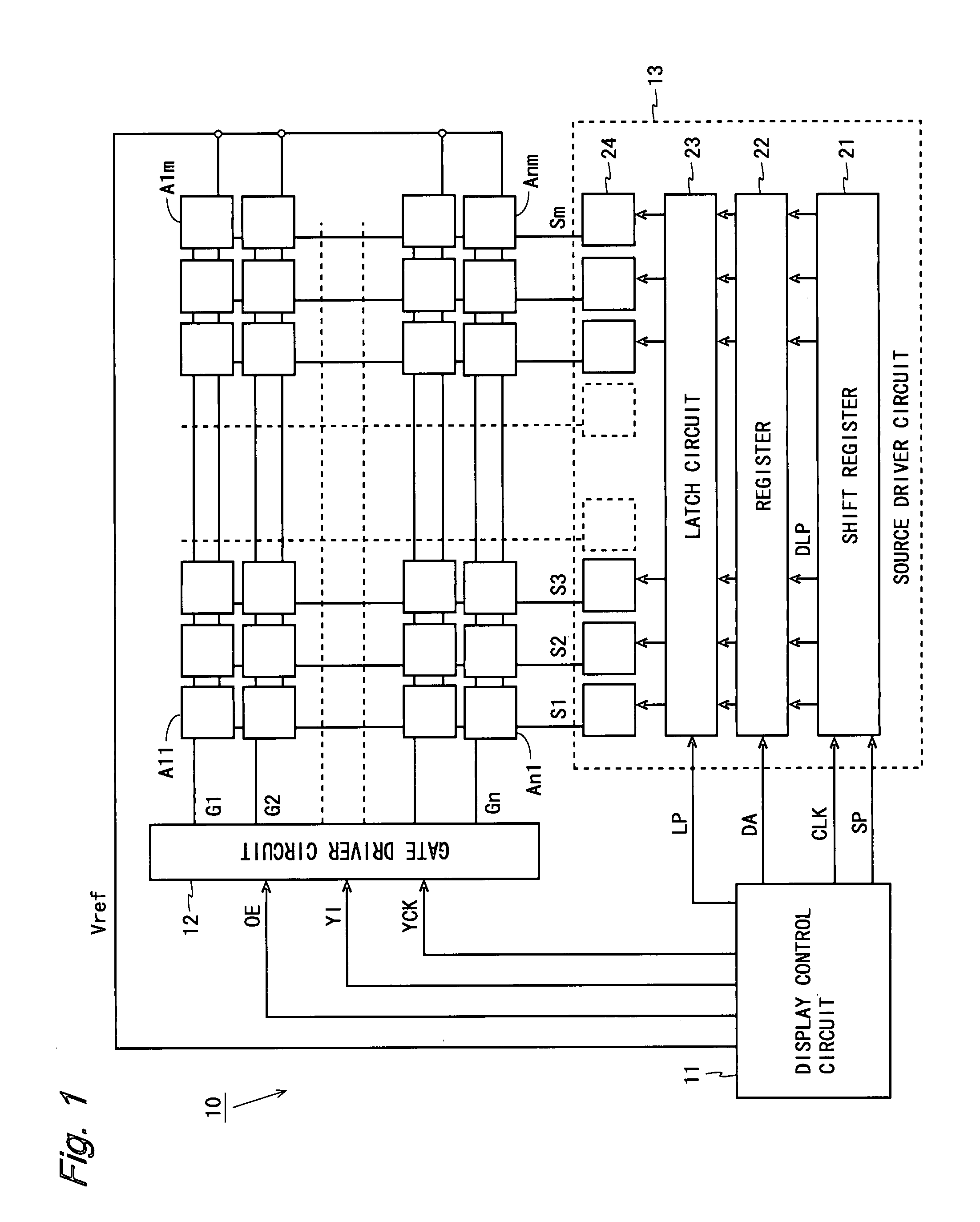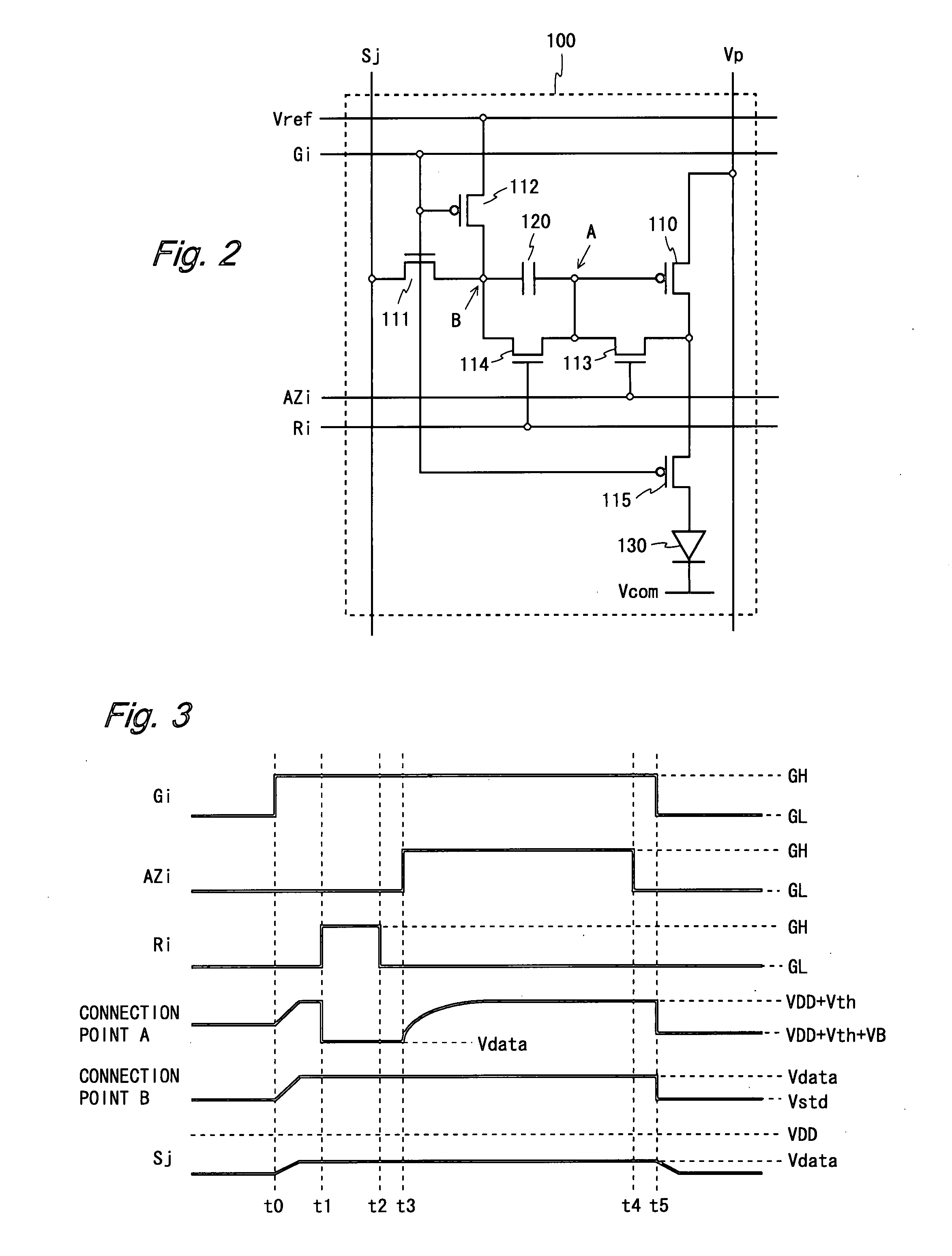Current-driven display device
a display device and current-driven technology, applied in the field of display devices, can solve the problems of difficult design of pixel circuits and drive circuits, difficulty in making current flow through tfts, and problems in current program schemes, so as to achieve stable the effect of simplifying the circuit and ensuring the stability of the potential of the third power supply wiring lin
- Summary
- Abstract
- Description
- Claims
- Application Information
AI Technical Summary
Benefits of technology
Problems solved by technology
Method used
Image
Examples
first embodiment
[0071]FIG. 2 is a circuit diagram of a pixel circuit included in a display device according to a first embodiment of the present invention. A pixel circuit 100 shown in FIG. 2 includes a driving TFT 110, switching TFTs 111 to 115, a capacitor 120, and an organic EL element 130. The switching TFTs 111, 113, and 114 are of an n-channel type and other TFTs are of a p-channel type.
[0072]The pixel circuit 100 is connected to a power supply wiring line Vp, a reference supply wiring line Vref, a common cathode Vcom, a scanning line Gi, control lines AZi and Ri, and a data line Sj. Among them, the power supply wiring line Vp (first power supply wiring line) and the common cathode Vcom (second power supply wiring line) are respectively applied with fixed potentials VDD and VSS, and the reference supply wiring line Vref (third power supply wiring line) is applied with a reference potential Vstd. The common cathode Vcom serves as a common electrode for all organic EL elements 130 in the displa...
second embodiment
[0094]FIG. 4 is a circuit diagram of a pixel circuit included in a display device according to a second embodiment of the present invention. A pixel circuit 200 shown in FIG. 4 includes a driving TFT 210, switching TFTs 211 to 215, a capacitor 220, and an organic EL element 230. The switching TFTs 211, 213, and 214 are of an n-channel type and other TFTs are of a p-channel type.
[0095]In a pixel circuit 100 (FIG. 2), a switching TFT 114 is provided between a connection point A and a connection point B. On the other hand, in the pixel circuit 200, the switching TFT 214 is provided between a connection point A and a data line Sj. Except for this point, the configuration of the pixel circuit 200 is the same as that of the pixel circuit 100. As with the pixel circuit 100, the pixel circuit 200 is connected to a power supply wiring line Vp, a reference supply wiring line Vref, a common cathode Vcom, a scanning line Gi, control lines AZi and Ri, and the data line Sj. The same potentials as...
third embodiment
[0097]FIG. 5 is a circuit diagram of a pixel circuit included in a display device according to a third embodiment of the present invention. A pixel circuit 300 shown in FIG. 5 includes a driving TFT 310, switching TFTs 311 to 314, a capacitor 320, and an organic EL element 330. The switching TFTs 311, 313, and 314 are of an n-channel type and other TFTs are of a p-channel type.
[0098]The pixel circuit 300 differs from a pixel circuit 100 (FIG. 2) in the following points. In the pixel circuit 300, a cathode terminal of the organic EL element 330 is connected to a cathode wiring line CAi instead of a common cathode Vcom. The pixel circuit 300 does not include a TFT corresponding to a switching TFT 115, and the driving TFT 310 is directly connected to the organic EL element 330. The potential of the cathode wiring line CAi is individually controlled by a power supply switching circuit (not shown) included in a display device 10. The pixel circuit 300 is connected to a power supply wirin...
PUM
 Login to View More
Login to View More Abstract
Description
Claims
Application Information
 Login to View More
Login to View More - R&D
- Intellectual Property
- Life Sciences
- Materials
- Tech Scout
- Unparalleled Data Quality
- Higher Quality Content
- 60% Fewer Hallucinations
Browse by: Latest US Patents, China's latest patents, Technical Efficacy Thesaurus, Application Domain, Technology Topic, Popular Technical Reports.
© 2025 PatSnap. All rights reserved.Legal|Privacy policy|Modern Slavery Act Transparency Statement|Sitemap|About US| Contact US: help@patsnap.com



